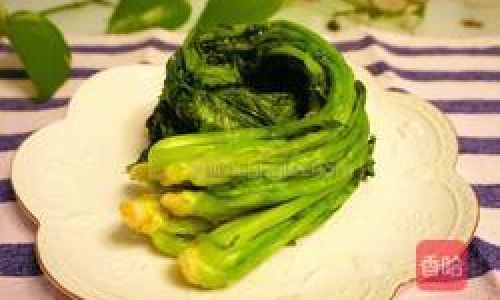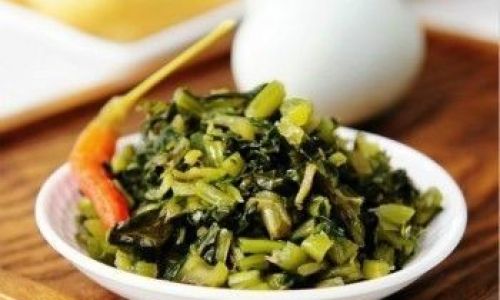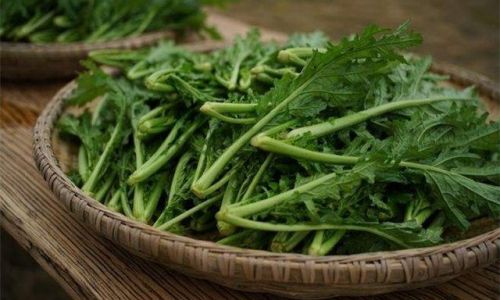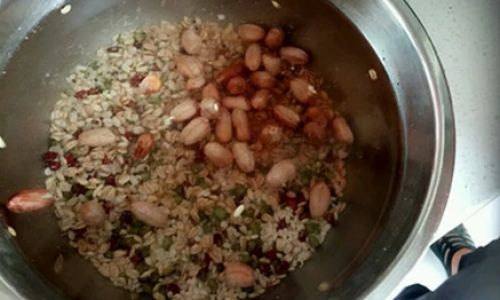Introduction
Salt-preserved potherb mustard, commonly known as salt-preserved snow cabbage (Brassica juncea var. crispifolia) in some regions, is a traditional Chinese preserved vegetable enjoyed for its unique flavor and long shelf life. This leafy green vegetable, belonging to the Brassicaceae family, undergoes a preservation process involving salting and fermentation, transforming it into a tangy, savory delicacy. Preserving salt-preserved potherb mustard not only extends its shelf life but also enhances its taste, making it a staple in many Asian cuisines.
In this comprehensive guide, we will delve into the intricacies of preserving salt-preserved potherb mustard, from selecting the right ingredients and tools to the detailed preservation process, storage tips, and troubleshooting common issues. By following these steps, you can ensure that your salt-preserved potherb mustard retains its flavor, texture, and nutritional value for months or even years.
Section 1: Understanding Salt-Preserved Potherb Mustard

1 What is Salt-Preserved Potherb Mustard?
Salt-preserved potherb mustard is a type of preserved vegetable made by fermenting potherb mustard leaves in a brine of salt and water. The fermentation process, driven by lactic acid bacteria naturally present on the vegetable surfaces, creates an acidic environment that preserves the vegetable while developing its flavor.
2 History and Cultural Significance
The tradition of preserving vegetables through salting and fermentation dates back thousands of years in China. Salt-preserved potherb mustard, in particular, holds a special place in Chinese cuisine, especially in regions with cold winters where fresh vegetables were scarce. This preservation method allowed families to enjoy the taste of summer vegetables throughout the year.
3 Nutritional Benefits
Despite being preserved, salt-preserved potherb mustard retains several nutritional benefits. It is a good source of vitamins A, C, and K, as well as dietary fiber and antioxidants. The fermentation process also increases the bioavailability of certain nutrients and produces beneficial probiotics, contributing to gut health.
Section 2: Selecting Ingredients and Tools
1 Choosing the Right Potherb Mustard
For the best results, select fresh, healthy potherb mustard leaves. Look for leaves that are vibrant green, firm, and free from signs of decay, pests, or disease. Avoid leaves that are wilted, yellowed, or have spots.

2 Salt Selection
The type of salt used for preservation is crucial. Non-iodized coarse sea salt or kosher salt is preferred because it contains fewer additives and dissolves more slowly, allowing for better distribution throughout the vegetable.
3 Tools and Equipment
- Large Bowls or Crocks: These are used for mixing the salt and vegetables and for storing the fermenting mixture.
- Weights: Clean stones, ceramic weights, or fermentation weights are used to keep the vegetables submerged in the brine.
- Cloths or Cheesecloth: These are used to cover the bowl or crock to prevent contamination while allowing gases to escape.
- Elastic Bands or Rubber Bands: To secure the cloth or cheesecloth.
- Clean Utensils: For stirring and handling the vegetables without introducing contaminants.
- Storage Containers: Airtight glass jars or ceramic containers for storing the finished product.
Section 3: The Preservation Process
1 Preparation
- Cleaning the Vegetables: Rinse the potherb mustard leaves under cold running water to remove dirt and debris. Pat them dry with clean towels or let them air-dry.
- Removing Stems: Cut off the thick stems, as they can be tough and bitter.
- Chopping: Chop the leaves into bite-sized pieces for easier handling and faster fermentation.
2 Salting the Vegetables
- Layering: In a large bowl or crock, layer the chopped potherb mustard leaves with salt. A general ratio of 10-15% salt by weight of the vegetables is recommended. For example, if you have 1 kilogram (2.2 pounds) of vegetables, use 100-150 grams (3.5-5.3 ounces) of salt.
- Mixing: Use clean hands or a utensil to gently mix the salt and vegetables, ensuring that each layer is evenly coated.
3 Packing and Weighing Down
- Packing: Once all the vegetables and salt are combined, pack the mixture tightly into the bowl or crock. This helps to expel air pockets and ensures even fermentation.
- Weighing Down: Place a clean weight on top of the vegetable mixture to keep it submerged in the brine that forms as the salt draws out moisture from the leaves.
4 Covering
- Covering the Bowl: Place a clean cloth or cheesecloth over the bowl or crock and secure it with an elastic band or rubber band. This allows gases produced during fermentation to escape while preventing contaminants from entering.
5 Fermentation

- Location: Place the bowl or crock in a cool, dark place where temperatures are consistent and between 65-75°F (18-24°C). Avoid direct sunlight and temperature fluctuations, which can disrupt the fermentation process.
- Duration: Fermentation typically takes 2-4 weeks, depending on the temperature and the desired level of tanginess. Check the mixture daily to ensure it remains submerged and to monitor for any signs of mold or off odors.
Section 4: Storing Salt-Preserved Potherb Mustard
1 Transferring to Storage Containers
- Timing: Once the desired level of fermentation is achieved, transfer the salt-preserved potherb mustard to clean, airtight glass jars or ceramic containers.
- Pressing Down: Pack the vegetables tightly into the jars, pressing down to remove any air pockets. Ensure that the vegetables are fully submerged in the brine.
2 Sealing and Storing
- Sealing: Secure the lids of the jars tightly to prevent air from entering.
- Storage Location: Store the jars in a cool, dark place, such as a pantry or cellar, where temperatures are consistent and between 50-65°F (10-18°C).
3 Shelf Life
- Properly preserved salt-preserved potherb mustard can last for several months to a year or even longer when stored correctly.
- Checking for Spoilage: Periodically check the jars for signs of mold, discoloration, or off odors. If any are present, discard the contents immediately.
Section 5: Troubleshooting Common Issues
1 Mold
- Identification: White or gray mold on the surface of the brine is usually harmless and can be skimmed off. However, black, green, or blue mold indicates contamination and the entire batch should be discarded.
- Prevention: Ensure that the vegetables are always submerged in the brine and that the cover is breathable but secure.
2 Soft or Mushy Vegetables
- Cause: Excessive exposure to oxygen or inconsistent temperatures during fermentation.
- Solution: Keep the vegetables submerged and maintain a consistent fermentation environment.
3 Too Salty
- Cause: Excessive salt use.
- Solution: Rinse the fermented vegetables with cold water before using to reduce saltiness.
4 Not Enough Brine

- Cause: Insufficient salt or improper packing.
- Solution: Add a brine solution made of dissolved salt and water to cover the vegetables. Use the same salt ratio as during the initial salting process.
Section 6: Using Salt-Preserved Potherb Mustard
1 Culinary Applications
- Stir-Fries: Add to stir-fries for a tangy, savory flavor.
- Soups and Stews: Use as a flavorful addition to soups and stews.
- Pickles and Relishes: Combine with other pickled vegetables for a unique relish.
- Rice Dishes: Mix into fried rice or use as a topping for plain rice.
- Condiments: Serve as a side dish or condiment with porridge, noodles, or dumplings.
2 Adjusting Flavor
- Rinsing: Rinse the salt-preserved potherb mustard under cold water before using to reduce saltiness and remove excess brine.
- Cooking: Cooking the preserved vegetable can further mellow its flavor and make it more versatile in recipes.
Conclusion
Preserving salt-preserved potherb mustard is a rewarding process that not only extends the shelf life of this nutritious vegetable but also enhances its flavor and texture. By following the steps outlined in this guide, from selecting the right ingredients and tools to the preservation process, storage tips, and troubleshooting common issues, you can create a delicious, long-lasting stash of salt-preserved potherb mustard. Whether enjoyed as a side dish, incorporated into main courses, or used as a condiment, this






0 comments